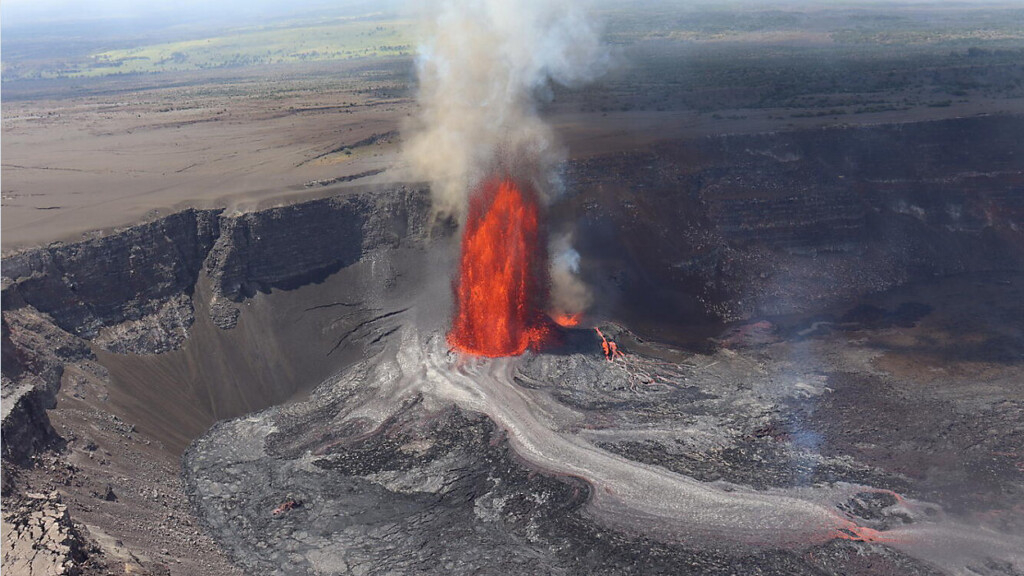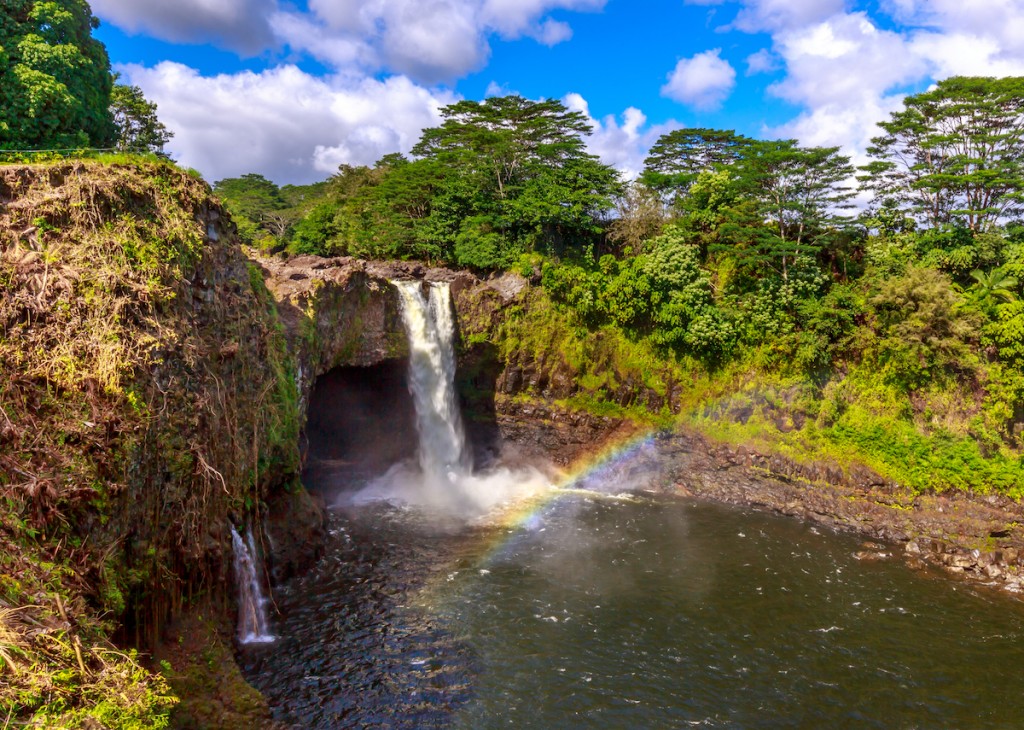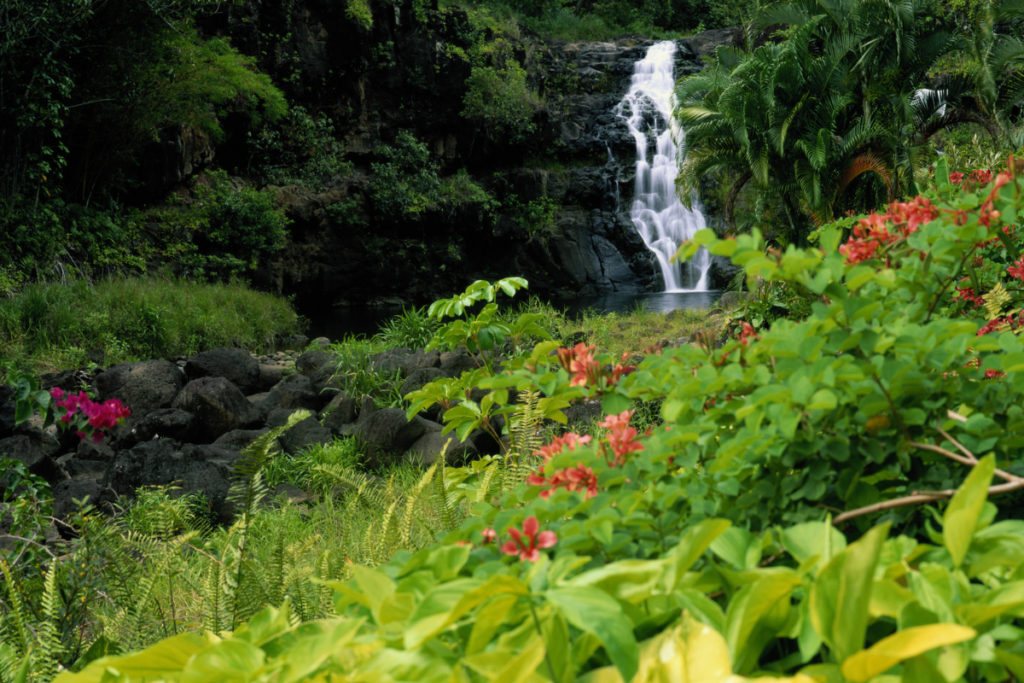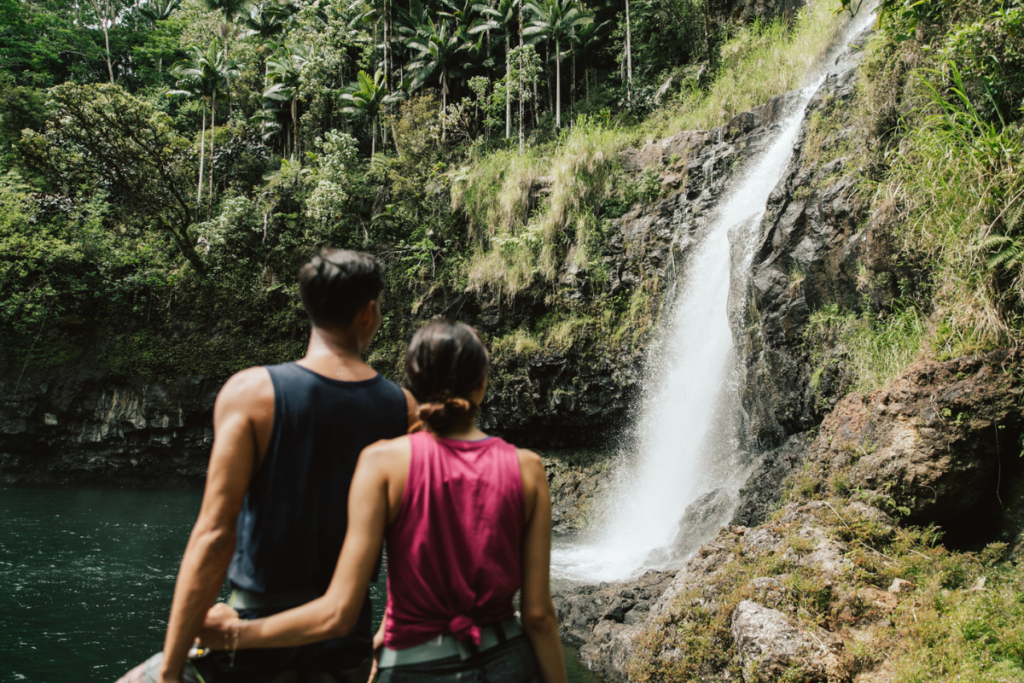We Missed Kīlauea’s Lava Fountains but Still Had an Epic Vacation
We got to Hawaiʻi Volcanoes National Park minutes after Kīlauea’s fountaining stopped, but there’s still a lot to do on Hawaiʻi Island.

At least we weren’t the only ones.
Like many of you, we had been captivated by the fountains of lava from Kīlauea, shooting up over 1,000 feet above Halemaʻumaʻu crater. The recent eruption—now exiting its Episode 16—has lured volcano enthusiasts from around the world to Hawaiʻi Volcanoes National Park to witness this extraordinary sight.
It definitely lured me!

A 1,000-foot fountain of lava within Halemaʻumaʻu crater in Hawaiʻi Volcanoes National Park.
Photo: Courtesy of National Park Service/Janice Wei
When we saw the fountains on the local news on Wednesday morning, I immediately booked two roundtrip tickets—for my 8-year-old son and me—to Hilo to see this in person. I mean, how many times in your life will you be able to see molten rock shooting up like a geyser?
The plan was to catch the earliest flight we could get on and head directly to the national park (about a 50-minute drive from Hilo International Airport). At any moment, the fountain could stop. And so far, Kīlauea’s pattern has been that lava sputters from two vents within Halemaʻumaʻu crater before the fountaining starts, then it stops in about 24 hours. So the window is small.

A view of the fountaining lava from a helicopter during Episode 16 of Kīlauea’s recent eruption.
Photo: Courtesy of U.S. Geological Survey/D. Downs
We kept watching the live streams of the crater, courtesy of the U.S. Geological Survey, and even when we landed in Hilo, it was still fountaining. Smaller but still going.
It took us about 45 minutes to get to the park entrance—when I received a text from a friend already there: The eruption had stopped. Literally, minutes before we arrived at Volcano House and the overlook of Halemaʻumaʻu crater.
To say I was bummed was a huge understatement. I wanted to immediately drive back to the airport, change my return flight and head home. I was done.
But my son convinced me that we could still have fun in the 24 hours we had planned to be on Hawaiʻi Island.
I took a deep breath. OK, I thought, maybe he’s right.
And he was.
There’s a lot to do on Hawaiʻi Island—and even just Hilo—even when Kīlauea isn’t actively erupting. So if you’ve booked a trip to Hilo, hoping you’ll be lucky enough to catch this temperamental volcano erupting, I’m here to say: You can still have a great time on the island if you—like me—missed it.
The Lava Glow at Night is Still Amazing

The lava lake at Kīlauea in 2023.
Photo: Courtesy of U.S. Geological Survey/M.Newman
There are several places within the national park to view the eruption at Halemaʻumaʻu. Some are super easy to get to—like the overlook at Volcano House—and others require a short trek. We decided to hit the overlook near Keanakākoʻi Crater, a mile-long walk (mostly paved) from the Devastation Trail parking lot. This overlook is the closest you can get to the crater. Since the fountaining had just stopped that day, we figured the glow from the lava would be the strongest that night. And we weren’t wrong! The lava lake glowed and crackled, sometimes lava sputtered and gurgled. It was amazing.
The National Park Has Great Hiking Trails

A hiker on Kīlauea Iki Trail in Hawaiʻi Volcanoes National Park.
Photo: Getty Images/Yiming Chen
This 333,308-acre national park boasts more than 150 miles of hiking trails. So even if you’re there when Kīlauea is erupting, you won’t want to skip trekking around the park. Hikes range in difficulty from easy walks and half-day treks to challenging expeditions through the park’s wild backcountry. One of the most popular trails—and my personal favorite—is the 4-mile Kīlauea Iki Trail, which starts in a native forest and ends with a walk across an otherworldly crater. Or walk through Nāhuku (aka Thurston Lava Tube), an easy walk through a 500-year-old lava tube with once a 2,000-degree river of lava once flowed. My son loved it.
Explore Hilo Town

Visit Waiānuenue, or Rainbow Falls, while in Hilo.
Photo: Getty Images/Png-Studio
This sleepy town has a lot to offer, from cute boutiques to family-run restaurants to the easiest-to-access waterfall on the island. We love grabbing bentos and Spam musubi from Kawamoto Store, browsing the used books at Basically Books, picking up boxes of mochi (my son loves the brownie-filled ones) from Two Ladies Kitchen, and indulging in a frozen hot chocolate from Puna Chocolate. You can also visit the Hilo Farmers Market, Waiānuenue (or Rainbow Falls) and Panaʻewa Rainforest Zoo and Garden (which is free).
READ MORE: Why Hilo Should Be On Your Hawaiʻi Travel Bucket List
And that’s just Hilo! There’s way more to explore on Hawaiʻi Island, from the paniolo (Hawaiian cowboy) town of Waimea to the sunny shores of Kailua-Kona. So don’t worry if you missed the eruption. There’s more to Hawaiʻi Island than a volcano.

